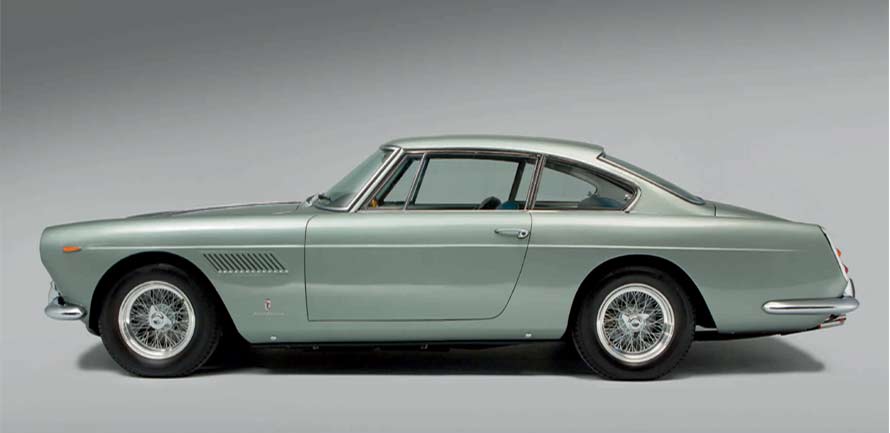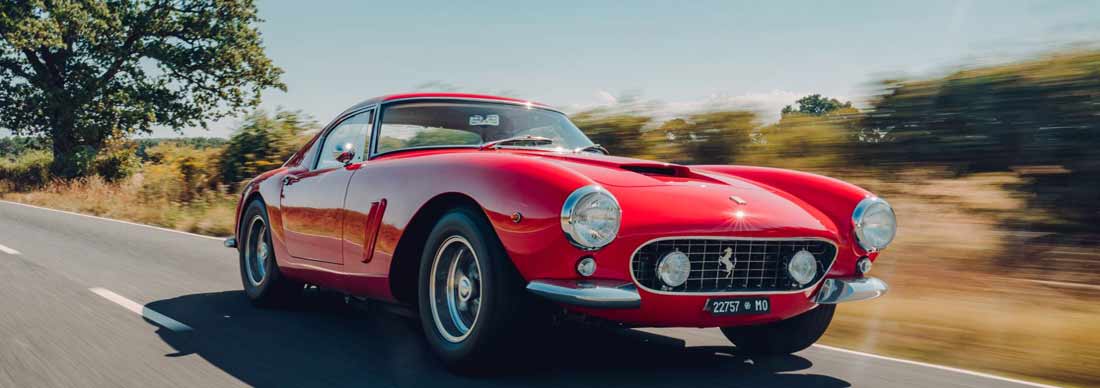
Ferrari 250 GTE: Author's Introduction
(Adapted from Ferrari 250 GTE - The family car that funded the racing)
It is well known that Enzo Ferrari had little interest in his road cars and is quoted as saying, ‘I have, in fact, no interest in life outside racing cars.’ So what possible excuse can there be for publishing a book about the Ferrari 250 GTE, as it has become known, a humble four-seat road car?
Well, firstly, to my knowledge, there has never been a book dedicated to the history of the first four-seater to be made by Ferrari in any significant numbers. Secondly, 2020 marks the 60th anniversary of the launch of the GTE at Le Mans in June 1960, and I didn’t want this anniversary to slip by without some recognition of the part this car played in enabling Enzo to pursue his real passion of racing cars – and winning.
During the years it was built, the GTE accounted for some 70 percent of Ferrari’s production and successfully filled the coffers. Ferrari may have said that he had no interest outside racing cars but he was smart enough to know that the racing had to be paid for. Thirdly, to my mind it is one of the most elegant cars of its generation and was also the genesis of what has become a dynasty of Ferrari four-seaters that continues to this day.

In the book, I cover the history of the development of the Ferrari 2+2 (ie, a four-seater) as an idea and of the GTE in particular, set against the background of the Ferrari factory in the late 1950s and early 1960s. The four original prototypes and their histories are covered in detail and the principal components of the car are examined, starting with the engine, a masterpiece of simple, effective engineering by Gioachino Colombo. We take a detailed look at the major developments through the three Series, although the timing of some of the remarkable number of changes doesn’t always fit with neat compartmentalisation of the Series boundaries.

In 1984, Len Miller in California started the 250 GTE Register & Newsletter with the aim of keeping track of the 954 GTEs built by Ferrari between 1960 and 1963, and of creating a community of owners and enthusiasts of these wonderful cars. The Register & Newsletter are still going strong and have been brought up to date with information collected and archived over the years, but there are still 90 GTEs about which nothing is known since they left the Maranello factory.
Sadly, later in their lives, many GTEs became just old ‘used cars’ and were neglected, often run until they were too difficult to fix and then put away in a shed somewhere. Even more sad is the fact that during this period of used-car status, many GTEs were rebodied or indeed ‘chopped’ to form the basis of replicas of the more glamorous 250s such as GTOs, California Spyders and Short Wheelbase Berlinettas. So far there are records of at least 180 GTEs that have suffered this fate.

Fortunately, we also have some cars still with their original owners or which at least remain within the same family and many more are now cherished by a new generation of enthusiasts. This helps a great deal in determining how the cars left the factory, and there are also some fine restorations that have been recently completed, with great attention to detail. Some of these restoration and preservation stories are included later in the book along with details, as best we know them, of the original finishes on the cars, factory Build Sheets and specifications.

In the interests of a complete work on the GTE, I’ve included some details of famous owners, some interesting ownership tales, the limited competition history of a few cars, the cars that have had their engines and drivetrains replaced, the replicas, and even a few of the scale models and illustrations that have been produced. I have been able to study some of the contemporaneous road tests from when the GTE was first announced and include an analysis of how the prices of GTEs have changed over the years.
A quick word at this point on the ‘magic’ 250 designation. As with most early V12 Ferraris, the number refers to the cubic capacity of each cylinder in cubic centimetres (250cc x 12 = 3,000cc, making it a 3-litre engine).
I also think it’s important to answer the question as to why it is called a GTE. As Gerald Roush put it, very simply, E is the letter after D! To explain a little further, the chassis of the GTE is designated as a Type 508E. The 508 chassis had been first used on the 250 Europa GT, the first road Ferrari with the Colombo 3-litre engine, and had been used in B, C and D configurations on the subsequent GT cars.
When the time came to produce a chassis for a slightly larger Grand Touring car, then 508E it was. Its original official title was 250 Gran Turismo Pininfarina Coupé 2+2 – a bit of a mouthful - so the car became better known as the GTE.

Please click the following link for more information on Ferrari 250 GTE - The family car that funded the racing, by David Wheeler.





1 comment
Hello, I have such a car and I want to buy the book. Greetings Günter
Dipl. Ing. Günter Reichert
Leave a comment
This site is protected by hCaptcha and the hCaptcha Privacy Policy and Terms of Service apply.